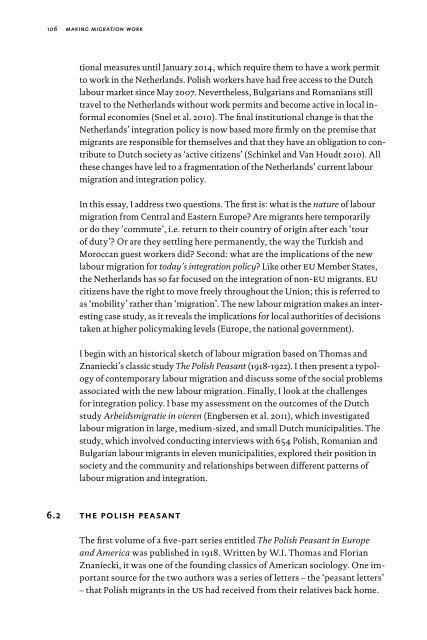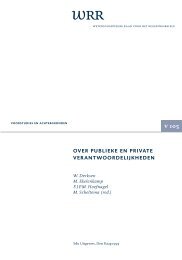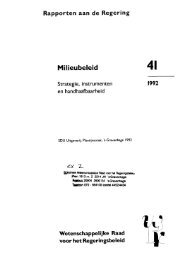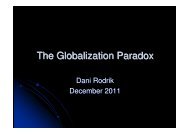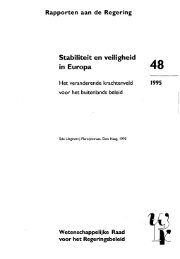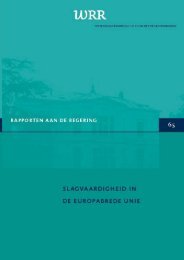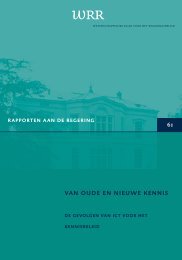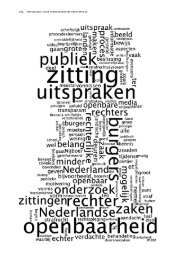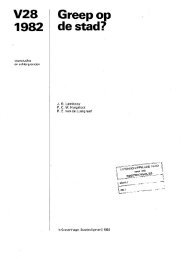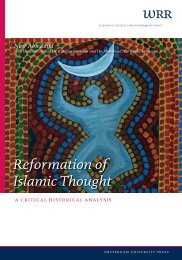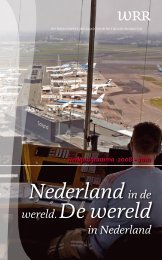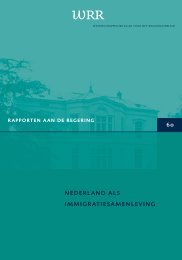Making Migration Work - Wetenschappelijke Raad voor het ...
Making Migration Work - Wetenschappelijke Raad voor het ...
Making Migration Work - Wetenschappelijke Raad voor het ...
- No tags were found...
Create successful ePaper yourself
Turn your PDF publications into a flip-book with our unique Google optimized e-Paper software.
106making migration worktional measures until January 2014, which require them to have a work permitto work in the Netherlands. Polish workers have had free access to the Dutchlabour market since May 2007. Nevertheless, Bulgarians and Romanians stilltravel to the Netherlands without work permits and become active in local informaleconomies (Snel et al. 2010). The final institutional change is that theNetherlands’ integration policy is now based more firmly on the premise thatmigrants are responsible for themselves and that they have an obligation to contributeto Dutch society as ‘active citizens’ (Schinkel and Van Houdt 2010). Allthese changes have led to a fragmentation of the Netherlands’ current labourmigration and integration policy.In this essay, I address two questions. The first is: what is the nature of labourmigration from Central and Eastern Europe? Are migrants here temporarilyor do they ‘commute’, i.e. return to their country of origin after each ‘tourof duty’? Or are they settling here permanently, the way the Turkish andMoroccan guest workers did? Second: what are the implications of the newlabour migration for today’s integration policy? Like other eu Member States,the Netherlands has so far focused on the integration of non-eu migrants. eucitizens have the right to move freely throughout the Union; this is referred toas ‘mobility’ rather than ‘migration’. The new labour migration makes an interestingcase study, as it re veals the implications for local authorities of decisionstaken at higher policymaking levels (Europe, the national government).I begin with an historical sketch of labour migration based on Thomas andZnaniecki’s classic study The Polish Peasant (1918-1922). I then present a typologyof contemporary labour migration and discuss some of the social problemsassociated with the new labour migration. Finally, I look at the challengesfor integration policy. I base my assessment on the outcomes of the Dutchstudy Arbeidsmigratie in vieren (Engbersen et al. 2011), which investigatedlabour migration in large, medium-sized, and small Dutch municipalities. Thestudy, which involved conducting interviews with 654 Polish, Romanian andBulgarian labour migrants in eleven municipalities, explored their position insociety and the community and relationships between different patterns oflabour migration and integration.6.2 the polish peasantThe first volume of a five-part series entitled The Polish Peasant in Europeand America was published in 1918. Written by W.I. Thomas and FlorianZnaniecki, it was one of the founding classics of American sociology. One importantsource for the two authors was a series of letters – the ‘peasant letters’– that Polish migrants in the us had received from their relatives back home.


